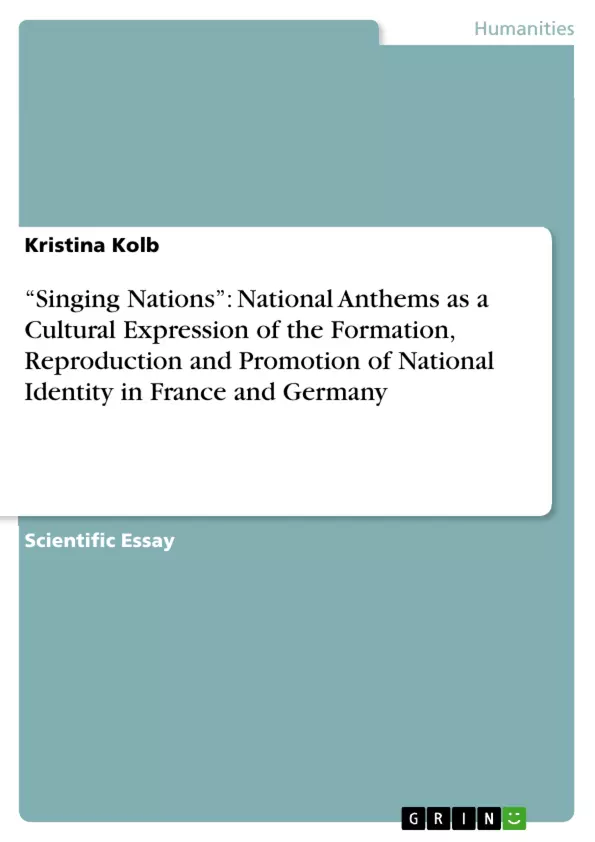When the first European nation-states were created during the 18th and 19th century, the necessity arose to form new bonds and loyalties within and to the state, replacing those in favour of regional rulers. The new governments and ruling elites found themselves under the obligation to create a common national identity in order to ensure the future existence of the recently created states. One way of doing so was the invention of national traditions and symbols, and most prominent among these were national anthems, patriotic songs that were supposed to enhance national awareness and unity. When looking at Europe, however, and in particular at France and Germany, it seems like these very anthems had, towards the end of the millennium, lost considerable significance and had been reduced and limited to, almost exclusively, international sporting events, as far as public consciousness was concerned. Yet, at the beginning of the 21st century, we can observe a sudden return of national anthems onto both social and political agendas, with new laws being passed and recent debates surrounding them.
Inhaltsverzeichnis (Table of Contents)
- Introduction
- Historical Context
- Particular Features
- Use of and Attitudes towards the anthems
- Football
- Conclusion
Zielsetzung und Themenschwerpunkte (Objectives and Key Themes)
This text aims to explore the role of national anthems in shaping and promoting national identity in France and Germany. It examines the historical context of their creation and analyzes the specific features of each anthem, including the music and lyrics. The text then explores the evolution of attitudes towards the anthems and their use in various contexts, particularly in the realm of football. Finally, it considers the significance of national anthems in the contemporary context of globalization and the European Union.
- Formation and Reproduction of National Identity
- Historical Context of National Anthem Creation
- Musical and Lyrical Features of National Anthems
- Attitudes towards National Anthems
- Role of National Anthems in Football
Zusammenfassung der Kapitel (Chapter Summaries)
- Introduction: This chapter introduces the concept of national anthems as expressions of national identity and outlines the objectives and key themes of the text. It discusses the historical context of national anthem creation in the 18th and 19th centuries, emphasizing the role of national anthems in fostering unity and loyalty within newly formed nation-states.
- Historical Context: This chapter delves into the historical context of the creation of the French and German national anthems, tracing their origins to the French Revolution and the German Confederation, respectively. It highlights the unique circumstances surrounding the creation of each anthem, including their initial purposes and their evolution over time.
- Particular Features: This chapter analyzes the specific features of the French and German national anthems, examining both their music and lyrics. It explores how these features reflect the distinct cultural and political contexts of each country and how they contribute to the construction and promotion of national identity.
Schlüsselwörter (Keywords)
The key focus of this text is on the role of national anthems in the formation, reproduction, and promotion of national identity. The text explores themes of historical context, musical and lyrical features, cultural homogenization, political unification, and attitudes towards national anthems, particularly within the context of France and Germany. The analysis encompasses the significance of national anthems in contemporary society, taking into account the influence of globalization and the European Union.
- Quote paper
- Kristina Kolb (Author), 2005, “Singing Nations”: National Anthems as a Cultural Expression of the Formation, Reproduction and Promotion of National Identity in France and Germany, Munich, GRIN Verlag, https://www.grin.com/document/138933



